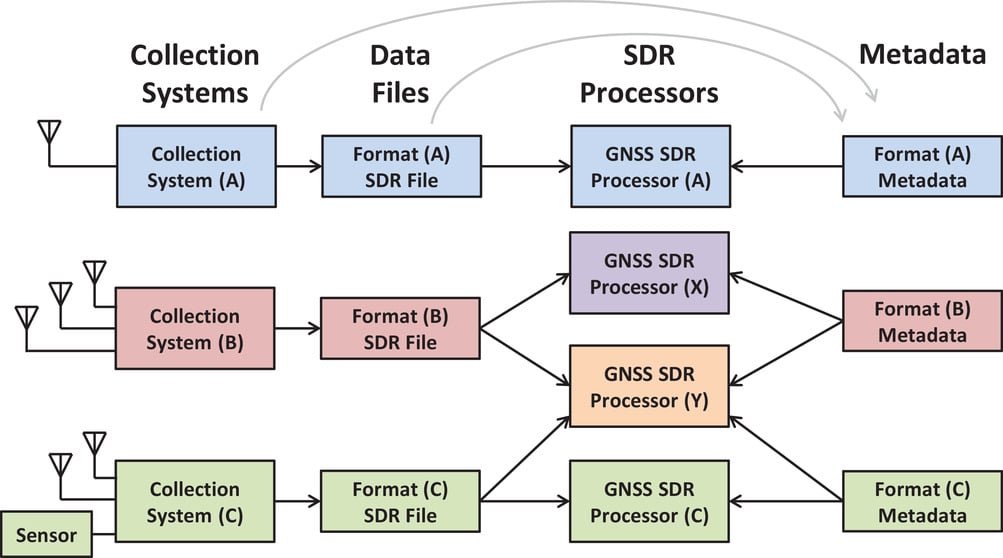GNSS software-defined radio metadata standard published
The GNSS Software Defined Radio Metadata Standard document has been published in NAVIGATION: Journal of the Institute of Navigation’s Spring 2021 issue, Volume 68, No. 1, pp. 11-20.
The metadata standard is the product of a three year-long effort of the ION GNSS SDR Standard Working Group and defines the parameters and schema to express the contents of SDR sample data files. The standard promotes the interoperability of GNSS SDR data-collection systems and processors.
In the past several years there has been a proliferation of software-defined radio (SDR) data-collection systems and processing platforms designed for or applicable to satellite navigation applications. These systems necessarily produce datasets in a wide range of different formats.
To correctly interpret this SDR data, essential information such as the packed sample format and sampling rate is needed. Communicating this metadata between creators and users has historically been an ad-hoc, cumbersome, and error-prone process.
To address this issue, the satnav SDR community developed the metadata standard and normative software library to automate the process, thus simplifying the exchange of datasets and promoting the interoperability of satnav SDR systems.
The standard was ratified and formally accepted as an Institute of Navigation Standard in January.
The formal standards document export citation is here.

















Follow Us